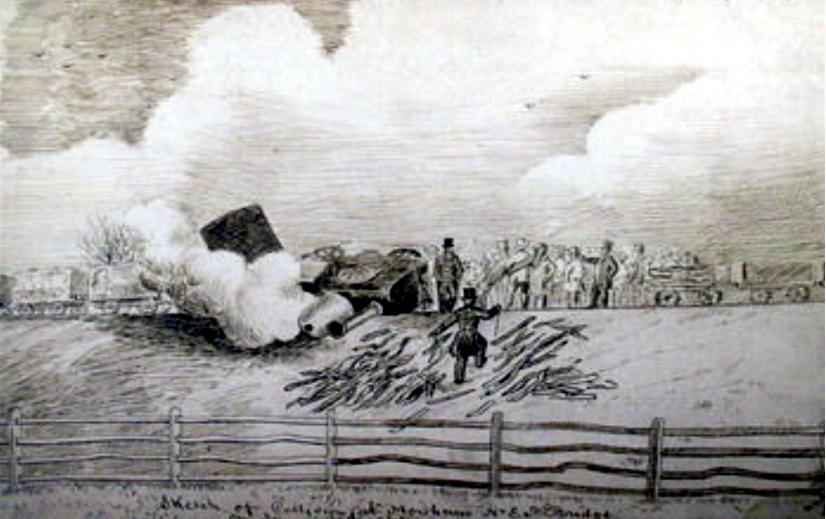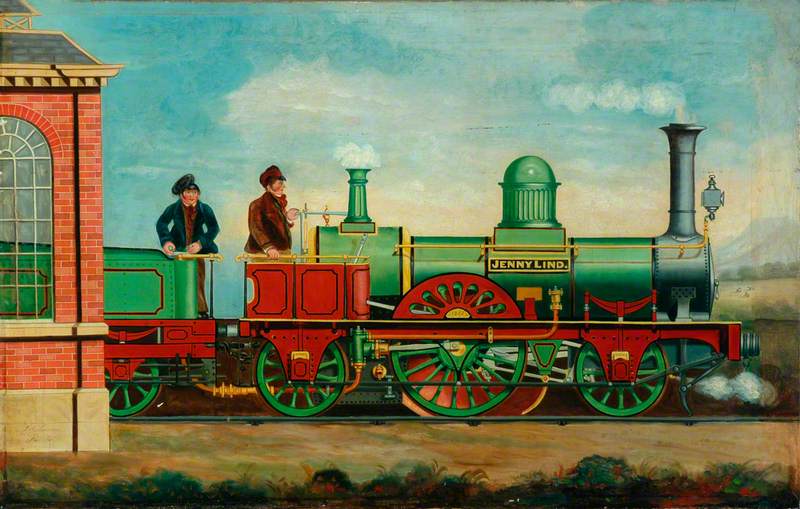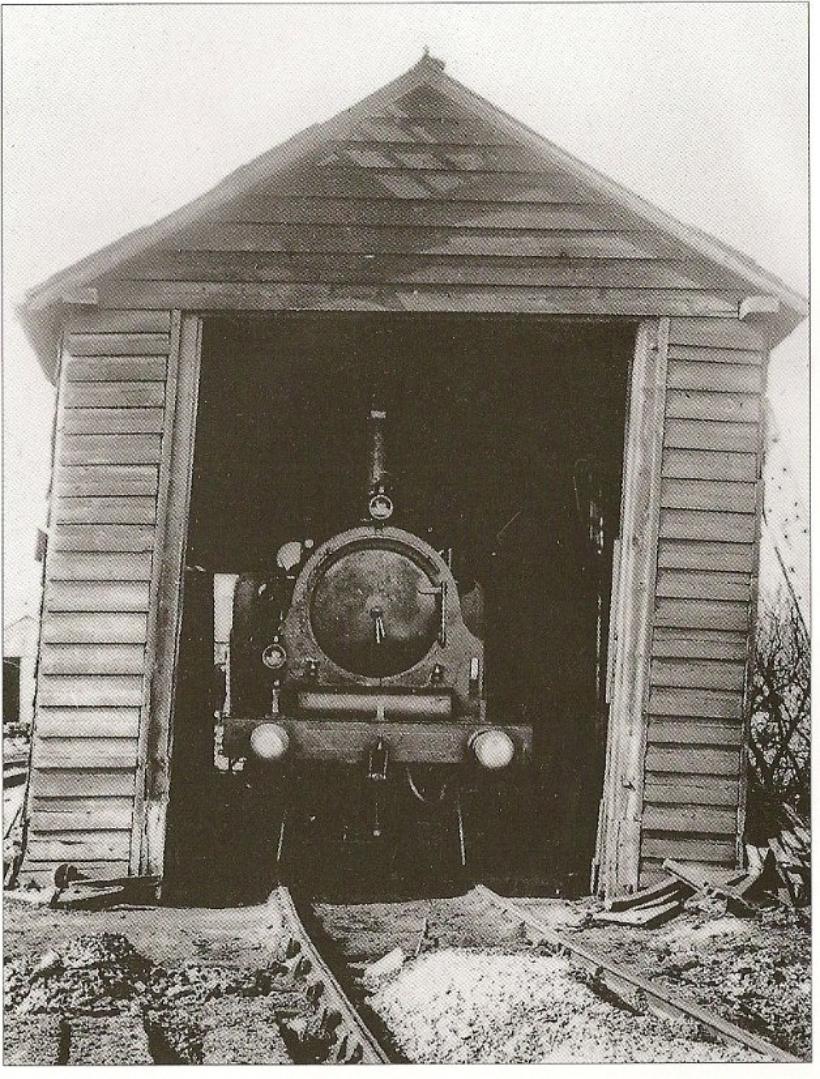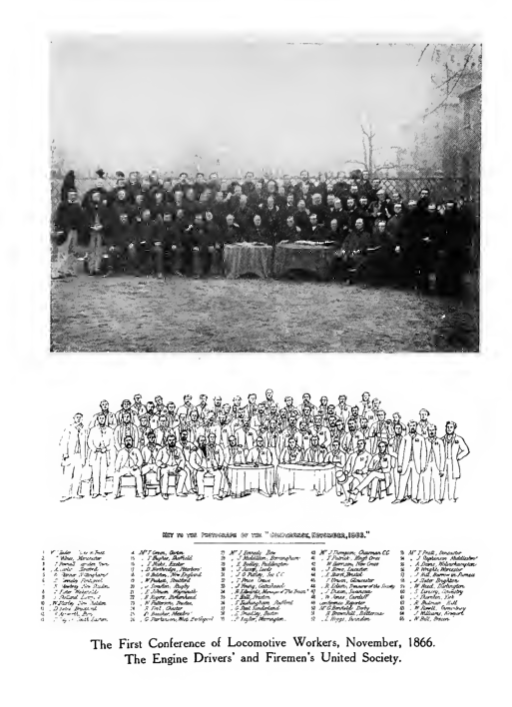
The formation of the
The Engine Drivers’ & Firemen’s United Society
THE WILLOW WALK SHUNTERS
NEW CROSS ENGINEMEN
In January 1866, Locomotive Superintendent John Chester Craven, designed a pair twin 0-6-0 saddle tanks locomotives, with a coupled footplate to footplate for working heavy main line goods trains up New Cross bank, and thereby avoiding the expense of employing pilot
engines. The fuel was carried in bankers alongside the two fireboxes, which left the footplates free from obstructions and offered the possibility of one crew handling both engines with subsequent saving in wages and man-power. However, when the loco-men heard of this, they flatly refused to work them unless given double wages, and when this was refused by Craven.
Craven then realised the scheme was impracticable and redesigned the this loco into two
independent loco to carry out shunting duties and local goods traffic.

East Bridge, near Horsham on January 12th 1866
Railway accidents on the
L.B.S.C.R.
from http://www.railwaysarchive.co.uk
Stewarts Lane 17th March 1866
no mention of Enginemen
SEE SUB PAGE
New Cross 30th March 1866
involving Driver James Prevett depot unknown
SEE SUB PAGE
Caterham Junction 30th April 1866
Involving Brighton Driver Unknown &
Fireman Charles Henry Beckwith
SEE SUB PAGE
London Bridge 22nd May 1866
no mention of Enginemen
SEE SUB PAGE
Itchingfield Junction 11th August 1866
no mention of Enginemen
SEE SUB PAGE
London Victoria Junction 7th September 1866
no mention of Enginemen
SEE SUB PAGE
Bramley 21st September 1866
Bramley driver Clayton & Fireman Prescott
SEE SUB PAGE
Tunbridge Wells West Loco Shed (Kent) (T-W) 1866-1985
Tunbridge Wells West locomotive Shed was opened on the 1st October 1866 by the East
Grinstead, Groombridge & Tunbridge Wells Railway and later under the ownership of the
London, Brighton & South Coast Railway. The shed is located to the South side of the station.
The shed was a 2 track shed with one through road on the northern side and the facilities
included a 52ft turntable across the western single road entrance. In 1890 this shed was
closed and demolished due to station enlargement.
A new brick built 4 track straight dead ended shed was opened in 1889 with a twin gable style slate roof was constructed on arches and located on the north side of Tunbridge Wells station. The facilities were improved to include a 52ft turntable across the western single road entrance.
In 1955 the shed was re-roofed with a louver pitched style asbestos clad steel framed roof over each track. The steam shed was closed on 9th September 1963 and the shed was used to stable the Emergency Control Train.

PHOTOGRAPHER UNKNOWN
PAINTING OF BRIGHTON LOCO SHED
WHICH LATER BEAME THE PULLMAN SHOPS
PETWORTH TO MIDHURST
In 1866 the railway was extended from Petworth to Midhurst (6 miles and taking 7 years to be built) by the Mid-Sussex & Midhurst Junction Railway. Midhurst station opened on 15th October 1866 then becoming the terminus and was timber built with a new timber build locomotive shed. (This shed was rebuilt by a larger timber structure in 1907).
A short connection was constructed between the L.B.S.C.R. and L.S.W.R. termini stations that faced on opposite sides of a minor country road was opened on 17th December 1866. However, locomotives were prohibited from crossing the weak bridge and could only be used for the transfer of freight by either a horse or fly-shunting. A covered footpath was provided for through passengers.
The Petworth Loco shed was closed on the 15th October 1866, by the L.B.S.C.R. as a result of the new loco shed being opened at Midhurst by the L.B.S.C.R. The shed at Petworth was dismantled and moved to Hayling Island.

Midhurst L.B.S.C.R. (first) Loco shed built in 1866
Midhurst L.B.S.C.R. Loco, (Mid) (1866 -c1955)
The London & South Western (brick built) shed was opened on the 1st September 1864, when the from Petersfield to Midhurst opened.
Midhurst’s first L.B.S.C.R. locomotive shed was opened on 15th October 1866 by the Mid-Sussex and Midhurst Junction Railway and later by the L.B.S.C.R., this was to replace the locomotive shed at Petworth.
The Midhurst shed was located to the north of Midhurst station on the east side of the line and was a timber built 1 track straight through shed with a pitched roof. The Facilities included a turntable (removed c1890s), a coal stage and a water tank. The shed was left to fall into disrepair was closed and demolished in 1907 and was replaced by a timber built 1 track straight through shed with a pitched slate roof.
With formation of the Southern railway in 1923 the L.B.S.C.R. shed was closed soon after grouping in c12.7.1925 (but may have stayed opened until the Chichester to Midhurst closed in 1935), and the L.S.W.R. (brick built) shed closed in 1937, even though the L.S.W.R. station closed in 1925.
The Locomotive depot remained as a stabling point until February 1955, when the Pulborough - Midhurst - Petersfield line closed to passenger services on the 5th February 1955.

The History of the Brighton Branch of A.S.L.E.F. can be traced back to the formation
of The Engine Drivers and Firemen’s United Society established in 1866, and one of the
earliest branch’s being located at Brighton.
The Engine Drivers’ & Firemen’s United Society
The Engine Drivers' and Firemen's United Society was established in 1865, with its objects being to assure friendly society benefits for its members. Later it fully realised that self pity and mutual help were not sufficient to move railway conditions, and it became much more militant in spirit than its rules indicated.
By the end of 1866, the Engine Drivers and Firemen’s United Society claimed to have a membership of over 10,000 nation wide. when they made initial demands for a 10 hour day and payment of overtime as well as an increase in pay.
The Engine Drivers and Firemen’s United Society held it first conference in November 1866
and the Brighton delegate was Engineman J. Slater. At this conference a motion was passed
to petition each of the Railway companies for a number of improvements to Drivers and Firemen’s working conditions.
A maximum of a 10 hour day. Payment for overtime with time and a half for Sunday
working.Daily limits of 150 miles for mainline trains and 120 miles on local trains. An
immediate increase in basic levels of pay.
A number of the biggest railway companies conceded some or all of these conditions rather
than have a costly dispute. This was such the case on the London Brighton & South Coast
Railway, were the Enginemen of the Brighton Railway went on strike in March 1867.
(1867 Brighton Enginemen Strike SEE SUB PAGE)
Within days of the end of the Brighton Railway Enginemen’s strike, the Enginemen on the North Eastern Railway went on strike in April,1867, for a reduction in their 12 hour working day. To smash this strike the directors of the North Eastern Railway recruited drivers from the London North Western Railway, the Midland, the Great Northern Railway and the Lancashire & Yorkshire, paying them special rates, provided they did not belong to a Union. Leaders of the strike were charged in the Courts and out of 1,050 strikers only 25 were reinstated. This saw the ending of the Engine Drivers' and Firemen’s United Society.
The Enginemen's Society, was sometimes referred as the 1867 Society.
A large number of the formers members of the old Enginemen’s Society, for some reason or other would never join the A.S.R.S. However they decided to responded to the invitation of joining the A.S.L.E.F.
It may not be generally known that the engine-drivers and firemen in England and Scotland belong to what promises to be a very formidable trade union. It was established about 10 months ago, has some 15,000 subscribing members, a capital estimated at about £50,000, and 64 branches, their head quarters being in London. To this society, which supports a newspaper of its own, appropriately called The Train, the drivers and firemen on the London, Brighton, and south Coast Railway belong,

FROM THE BOOK - ENGINES & MEN